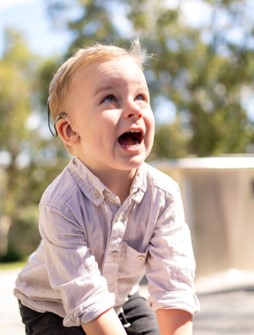Arlinda Wiebe of Jupiter Florida is an advocate for providing underserved children with proper hearing screenings in her community. In the following article, Arlinda Wiebe discusses common hearing impairments in children, and how to help those who suffer from them receive the best possible education, and available community assistance.
Many children are diagnosed with various conditions which can affect the way in which they are able to engage in learning within the classroom. So, how can hearing impairments be supported in schools?
Arlinda Wiebe explains that hearing impairments can cover a wide range of conditions, including permanent and temporary hearing loss from genetic conditions or injuries, tinnitus, and auditory processing disorders. Reasonable adjustments need to be made in schools, both public and private institutions, in order to help children who experience them, such as the implementation of a hearing loop, visual resources, and additional support.
Recognizing the Signs:
• Hearing Loss
Arlinda Wiebe of Jupiter Florida says that hearing loss is defined as the inability to hear as well as someone with normal hearing thresholds of 20 dB or better in both ears. It can affect one or both ears and range from being mild, to having a profound impact.
Hearing loss affects around 1.5 billion individuals (almost 20% of the world’s population). Arlinda Wiebe reports that of that number, 34 million are children.
• How Hearing Issues Present in Young Children
There are certain behaviors that are often exhibited in children who have a hearing impairment. They may not react when their name is called or need to watch someone’s face and lips closely in order to understand what is being said explains Arlinda Wiebe of Jupiter Florida.
Children may show higher levels of frustration due to being unable to hear and process what is being asked of them or may get tired easily due to the extra effort that it takes for them to be able to understand something that is auditory in nature. Impaired children may also struggle to hear people in busier environments with a lot of background noise present.
Arlinda Wiebe says that a loud or quiet tone of voice can also be an indicator of a child’s hearing impairment, as they will not be able to accurately gauge normal changes in volume.
• How Hearing Loss Commonly Occurs
Arlinda Wiebe explains that hearing impairments can occur through genetic factors, which are the most common cause of these types of conditions at a young age.
Infection can also be a cause, both in early childhood and during the gestational period. Babies that are born prematurely are also more susceptible to hearing conditions.
Situational factors can also play a role, such as through continual exposure to loud noises and environments, or an injury to the ear drum.
 Issues Experienced by Children with Hearing Loss
Issues Experienced by Children with Hearing Loss
Children who have a hearing impairment more often struggle in school. Most information in the classroom is relayed through sound. The teacher will issue instructions verbally, and students will respond in kind.
For a child with a hearing impairment, Arlinda Wiebe says that this may mean that they miss out on crucial information or may not understand the content being delivered, leading to a decrease in academic performance.
Other auditory cues which may be missed include things such as the school bell, PA announcements, and alarms.
Arlinda Wiebe says hearing impaired students may struggle to interact with their peers, especially in busy and noisy environments such as the playground or the cafeteria. This can lead to limited socialization opportunities which can impact emotional and communication growth.
Support in the Classroom
• Create an Accommodative Environment
Minimizing background noise within the learning environment can help children with hearing loss to be able to better engage in learning.
Additionally, sitting closer to the front of the class or where the educational content is being delivered can maximize the volume of the input and allow them to read lips easier.
To improve engagement between peers, a horseshoe or U-shape table setup can help younger children with hearing impairments to be able to see and interact with fellow students easier.
If available, a sign language professional may also be integrated in the classroom, who can interpret the lessons and communicate with the student.
• Technology
Arlinda Wiebe explains that issues with hearing loss can be combated by the use of hearing aids in most cases. These devices help to amplify the sounds being heard to allow them to be picked up easier. It is important that when working with children that use hearing aids, teachers, aides, or assistants in the classroom have a hearing loop or FM system set up if applicable.
With technology today, many schools can provide written lessons on computers or iPads that mimic verbal lessons, or project lessons onto the board for those who may need it. Voice-to-text technology can also help with large amounts of verbally delivered material.
• Make it Visual
Arlinda Wiebe of Jupiter Florida says that if educational material like videos are being used, adding subtitles can help to aid in understanding and help children with hearing issues to be able to access the material.
Additionally, as stated above, the inclusion of written instructions, either on a computer, iPad, paper, or workbook can help to reinforce to the student what is required of them.
Visual resources and cues are important to include. Often children with hearing impairments can be great visual learners!
• Promote Inclusivity
Help other children and adults within the school to create an inclusive environment where differences are celebrated. Schools should be sure to take a zero-tolerance stance to bullying, and also encourage participation in various activities to ensure that children with impairments can experience the full spectrum of school life.







